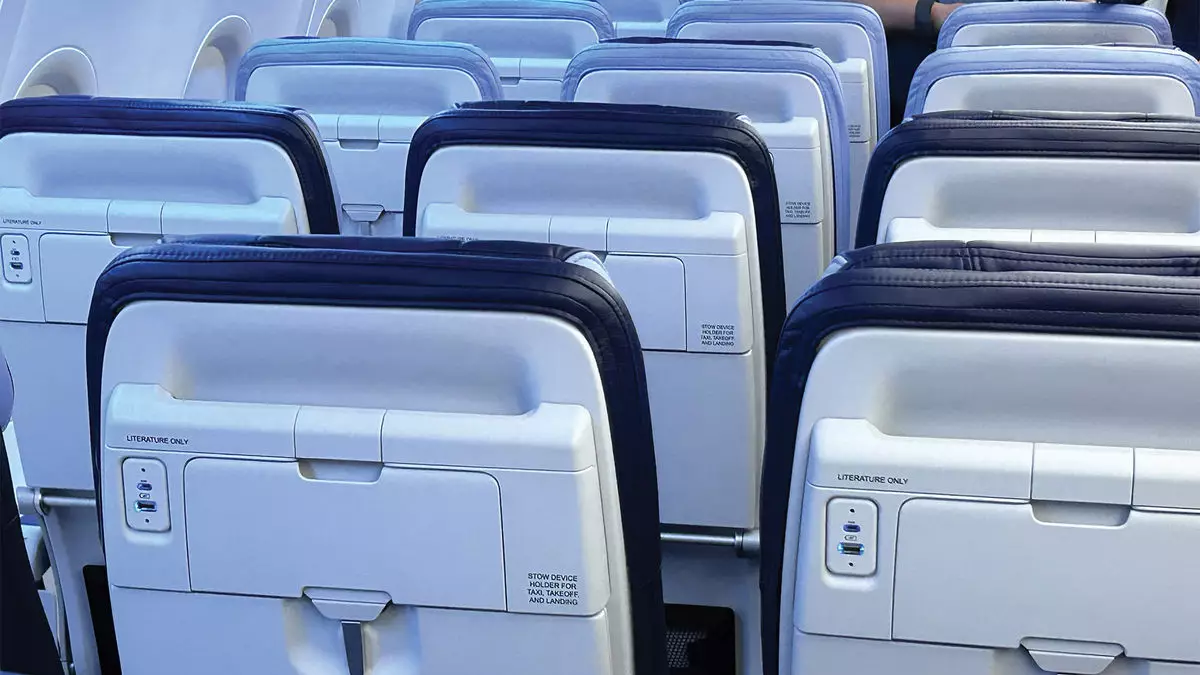In a bid to modernize its fleet and enhance customer experience, Southwest Airlines is embarking on a strategic overhaul of its seating arrangements, beginning as early as the first quarter of next year. Customers can expect to see planes equipped with extra-legroom seats, which will officially be available for purchase in mid-2026. This transition represents a significant shift for Southwest, a company that has maintained an open seating model for over five decades. The airline’s CEO, Bob Jordan, acknowledged the complexities and necessary adaptations involved in such a monumental change.
While the excitement around newly configured planes builds, the path to launching these extra-legroom seats is fraught with challenges. Southwest plans to implement these changes gradually, retrofitting between 50 and 100 aircraft a month, aiming for completion by the end of 2024. Although the new seating offers a generous 34 inches of legroom between rows, the existing standard seating will see a minor reduction in space, dropping to 31 inches. This controversial decision reflects the airline’s attempt to balance customer comfort with operational logistics on their popular larger aircraft, the 737-8.
The gradual rollout has drawn criticism, particularly from Elliott Investment Management, a significant stakeholder in Southwest Airlines. They argue that the timeline reflects inefficient leadership and a lack of vision within the company. Critiques from Elliott highlight a broader concern about how effectively the airline is adapting to market demands when compared to its competitors, who have rolled out similar changes more expeditiously. In essence, the criticism underscores the stakes involved in executing a successful transition in a highly competitive industry.
Challenges Ahead
Significant technological hurdles lie ahead for Southwest as it transitions from an open seating to an assigned seating model. More than 60 system platforms will require updates to facilitate this switch, ensuring diners receive a seamless blending of traditional service with modern conveniences. The choice to maintain open seating during the transitional phase inevitably increases the risk of operational mishaps, which Jordan and executive vice president of transformation, Ryan Green, are keenly aware of. They emphasize the importance of a well-coordinated rollout, as any misstep could jeopardize customer trust and satisfaction.
On the customer-facing side, Southwest has developed a stratified pricing model for the new seating options, distinguishing between different levels of comfort and convenience in its planes. The premium extra-legroom seats will be segmented throughout the cabin, with the most desirable accommodations situated at the front. This structured pricing approach aims not only to maximize revenue but also to ensure customers perceive the value of their choices based on seat location.
The introduction of assigned seating will also interact intricately with existing fare classes, with options available across the board. The Wanna Get Away fare will still not include seat assignments, catering to budget-conscious travelers. However, customers can opt to purchase seat assignments as add-ons, thereby increasing flexibility while enhancing the perceived value of higher-tier fare products.
In addition to the seating overhaul, Southwest is also set to enhance its network through partnerships aimed at driving additional revenue streams. The announcement of a renewed alliance with Icelandair marks a strategic expansion for the airline. Initially launching operations out of Southwest’s Baltimore hub, this collaboration signifies a significant shift back towards international connectivity, a domain in which Southwest has traditionally held limited presence. Expanding the partnership into other U.S. cities over the coming year could open new avenues for customer engagement and attract various travel demographics.
As Southwest Airlines navigates the complexities of modernizing its service offerings, the journey is being closely scrutinized by industry experts, stakeholders, and customers alike. The balance between enhancing customer satisfaction, maintaining operational efficiency, and adapting to competitive pressures will be critical as the airline steps into this new chapter. The evolution of customer expectations warrants a responsive strategy, and only time will tell if Southwest can successfully execute these ambitious changes without compromising its foundational ethos of affordability and accessibility. The upcoming years will be pivotal as Southwest Airlines endeavors to solidify its place in a rapidly evolving landscape.


Leave a Reply